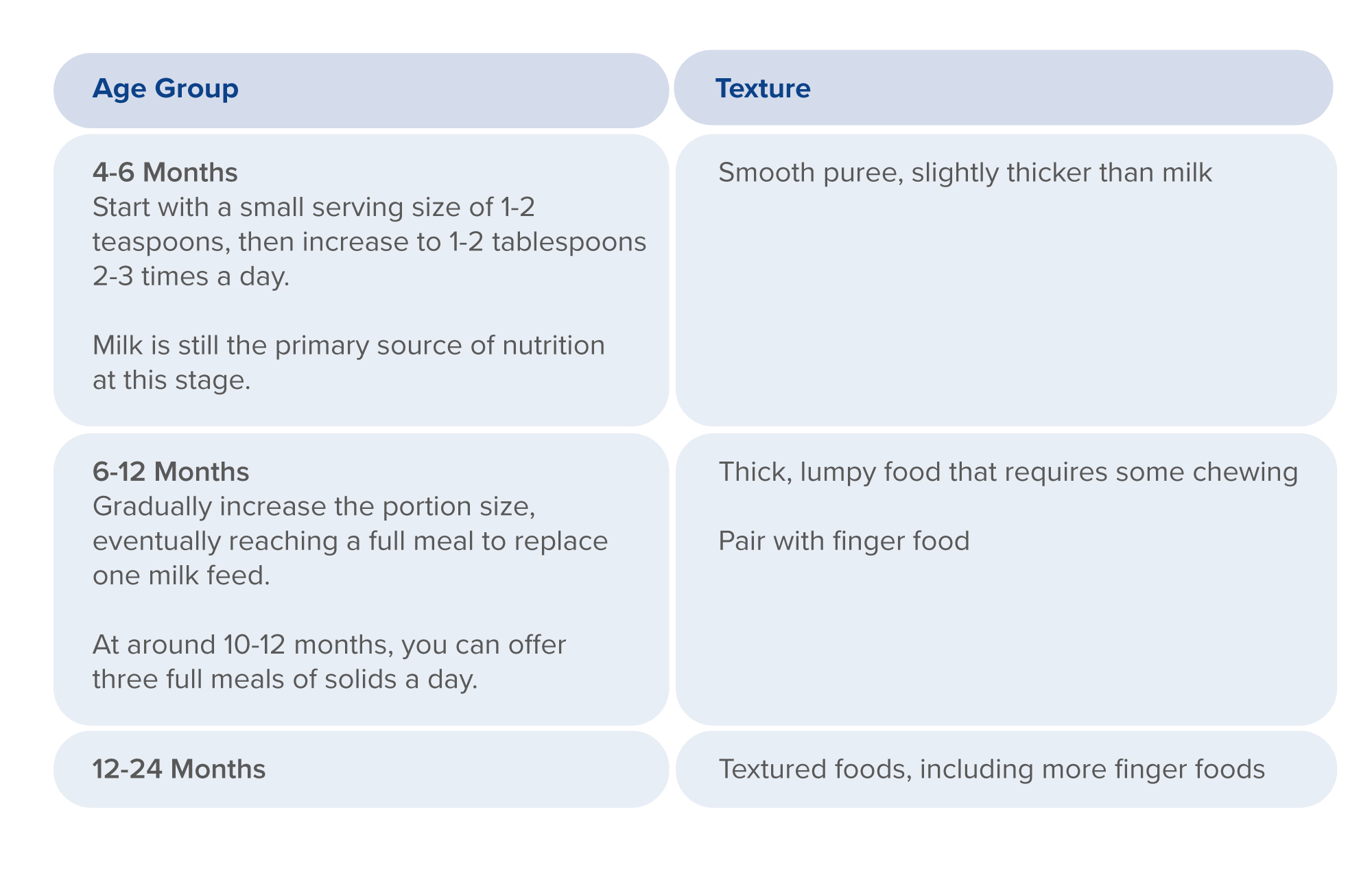Comprehensive Guide to Baby Feeding: Charts, Schedules, and Tips
Most parents understand that nutrition is critical to healthy growth and development. What is less well-known is that optimal nutrition during pregnancy, infancy, and early childhood offers health benefits that can last a lifetime. Health experts agree that good nutrition during the first thousand days, or the period from conception through two years old, has positive health benefits during childhood and beyond.
Differences between breastfeeding and bottle-feeding formula
Breastfeeding and bottle-feeding formula are the main methods of promoting infant nutrition, and the choice between the two depends on individual circumstances or health considerations. Many moms like to do a mix of both.

Breast milk provides natural nutrition through enzymes and antibodies that offer numerous health and cognitive benefits. Formula, on the other hand, mimics the nutritional composition of breast milk without the live cells and antibodies and is the best alternative to breast milk.
Bottle-feeding breast or formula milk allows others to feed the baby and for the father to play a more active role.
Baby Feeding Amounts
It is recommended that newborn babies be fed at least every three hours, day and night. In terms of volume, this is typically two to three ounces every two to three hours. As the baby gets older, you can space out the feeding times, usually around two to three months old, when they start sleeping through the night.
Baby Feeding Schedules
As a parent, it's important to understand how your baby communicates their hunger and needs. Feeding your baby when they show hunger cues is okay, instead of sticking to a rigid schedule. Early hunger cues can include rooting, sucking on fingers, lip smacking, or extreme fussiness.

The CDC recommends feeding formula-fed babies at least every three to four hours, which is about 6-8 feedings over the day.
Baby Feeding Schedule for Older Infants
Around six months, your baby needs more energy and nutrients than breast milk can offer. At this point, you need to introduce complementary foods to meet those needs. This transition is referred to as complementary feeding. The World Health Organization recommends the following schedule:

Baby Feeding Charts
Baby feeding charts are essential for monitoring and managing your infant's nutrition and growth.
Newborn Baby Feeding Chart
Tips for Tracking Feeding Times and Quantities
Feeding times may be erratic for newborns in the beginning, but over time, you can track their feeding patterns to create a well-optimized feeding schedule. For instance, you can use a feeding journal or app to record feeding times or set reminders on your phone.
Baby Feeding Chart for Different Stages
Tools for Baby Feeding
Baby feeding tools make it easier for you to give your baby the best nutrition in the most efficient way. Tools such as bottles and baby log tracking aids ensure your baby is fed at the right time.

How to Choose the Right Bottle for Your Baby
The right baby feeding bottle should be functional and safe. Here are some factors to consider when choosing a bottle:
- Nipple type and shape — Choose a bottle with a nipple that mimics the breastfeeding experience.
- Flow rate — Choose bottles with flow that can be adjusted as your baby grows and their feeding speed increases.
- Anti-colic features — Consider bottles with venting systems to reduce air intake, which can help minimize gas and discomfort.
- Ease of cleaning — Some bottles are dishwasher-safe or have self-sterilizing features, which can save time and ensure thorough cleaning.
Tips and Best Practices
A consistent feeding routine ensures your baby receives adequate nutrition throughout the day and can provide structure for you and your baby. Here are some tips to create a consistent feeding routine:
- Set regular feeding times at roughly the same times each day.
- Observe for hunger cues such as fussiness.
- Create a relaxing environment during feeding and minimize distractions.
- Establish a sequence for feeding, such as diaper change, feeding, and burping every time so your baby can settle into a routine.
Handling Feeding Challenges
Newborns can get fussy, and even with a clear, predictable routine, you may encounter common feeding challenges, even for a healthy baby. Here's how you can address some of the issues:
- Latching problems — Ensure proper latch technique and talk to a lactation consultant to address latch issues early on.
- Colic and reflux — Try feeding smaller amounts more frequently to ease digestion. Burp your baby regularly during feedings and keep them upright after eating to reduce reflux symptoms.
- Slow weight gain — Monitor your baby's weight gain and feeding patterns closely. Consult a pediatrician to rule out any underlying medical conditions.
If you have difficulty feeding your baby, it's important to seek professional help. Your pediatrician can provide personalized guidance, support, and reassurance during your baby's feeding journey.
Proper Baby Feeding Practices Lead to Healthy Kids
Optimal nutrition fuels brain growth and development. It lays the foundation for a child's brain function, motor skills, and social and emotional development, which can greatly influence their success in school and adult life. It's never too late to build a foundation for health. By incorporating the feeding tips and tools above, you can set the stage for your child's optimal health, physical growth, and neurodevelopment.